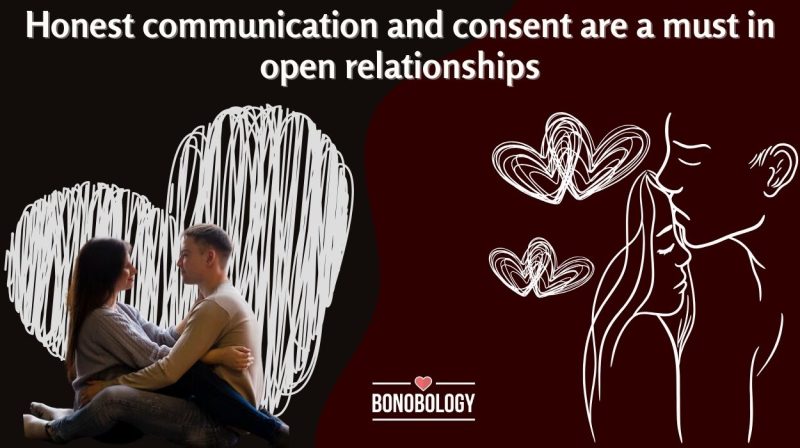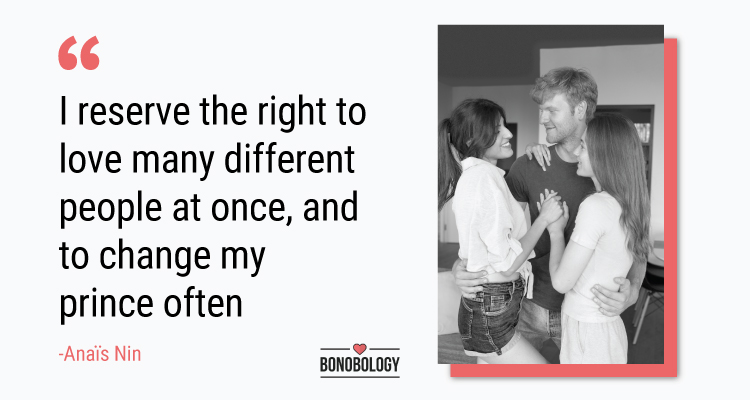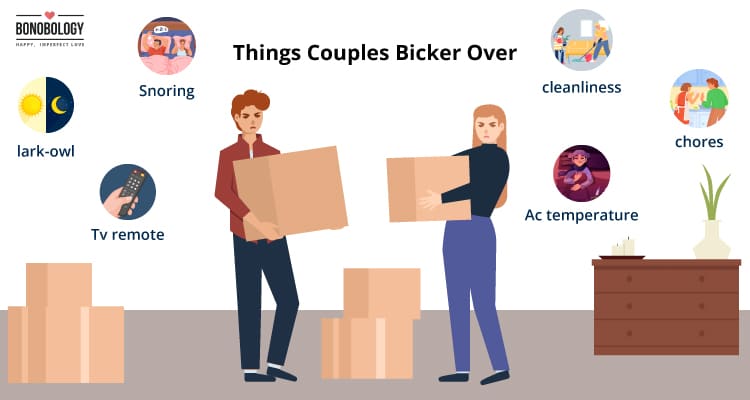Are you curious about what a non-monogamous relationship means? Or perhaps you’re non-monogamous yourself and want to know more about such relationships? Or maybe you want to support your friends who follow this relationship style? No matter which of these is true for you, you’ve come to the perfect place. Here, we are going to look at the definition of a non-monogamous relationship, different types, how to practice it, and how monogamy vs. non-monogamy plays out.
What Is A Non-Monogamous Relationship?
Table of Contents
A non-monogamous relationship is generally used to indicate any relationship which falls outside the realm of monogamy. For a relationship to be non-monogamous, there has to be more than one partner at least. Though polyamory, polygamy, swinging, and extramarital affairs are all considered non-monogamous relationships, yet when someone speaks of non-monogamy, they are generally referring to polyamory.
Polyamorous individuals believe that love can’t just be restricted to one person throughout their life. They have plenty of love to give and receive, which is why they can have more than one partner at a time. They believe you can have different types of relationships with different people in your life with varying levels of importance and attachment and this allows you to have a fulfilling and adventurous life, filled with those you love and cherish.
And that’s what we’ll talk about today: polyamory. It’s important to note here that this non-monogamous relationship doesn’t equate to infidelity because the consent of all partners is involved. To make a distinction from infidelity, we’ll call polyamory Ethical Non-Monogamy (ENM).
Related Reading: 12 Best Polyamorous Dating Sites
What It Means To Practice Ethical Non-Monogamy?

There are multiple ways of practicing an ethical non-monogamous or an ENM relationship. Partners respect each other’s boundaries and decide beforehand what they want from the relationship. In this section, we’re going to look at some of the usual practices observed in ethical non-monogamy:
1. You are transparent to each other in ethical non-monogamy
Being clear about what the concerned parties expect from an ENM relationship is crucial to sustaining it. It helps you set your boundaries and create a healthy, honest, and authentic connection. It also helps avoid any unnecessary complications in emotions and behaviors toward each other.
2. You can still have a primary relationship
A polyamorous individual may have equal relationships with each of their partners. Or there’s a primary partner with whom they prefer to spend most of their time and share plans for the future. The whole dynamic works on the basis of whether you wish to practice a hierarchical relationship structure or not.
3. There are clear-cut rules in your ENM relationship
It can often get confusing when you’re in several relationships. To keep it orderly and uncomplicated, it’s preferable to have agreements in your non-monogamous relationships. The partners can decide how they want to take their relationship forward if they want a relationship that’s sexual, romantic, or platonic, whether they see a future together or not, and more.
You inform your partners about the nature of relationships that you have with others (if they ask for details). By keeping all things on the table, you avoid several potential conflicts in the future. Please remember that people can cheat within a polyamorous set-up as well if they break the polyamorous relationship rules or cross established boundaries. This is why such conversations are vital.
Types Of Non-Monogamous Relationships
There are various types of an ENM relationship. In this part, we’re going to have a look at the non-monogamous relationships chart which would give us a better idea of how it works in real life. Each relationship, though an example of ethical non-monogamy, can be entirely different from the other.
1. Non-monogamous relationship without any labels
There are a lot of individuals who don’t like practicing any specific type of non-monogamous relationship. Their relationship styles don’t show characteristics that match a type, which is why their practice is unique to them. The agreements in their relationships might be malleable. It all depends on how they decide to go about each of their relationships.
2. Open relationships
This is the kind of ethical non-monogamy where two individuals are in a relationship but they’re open to any outside sexual or romantic experiences as well. While the chief priority is the primary relationship, both the partners can be involved with other people. However, the individuals don’t usually commit themselves to the outside parties and the connections remain outside the realm of the primary relationship. There are both pros and cons of open relationships and it helps to know them all before being a part of one.
3. Polyamory

A polyamorous relationship can occur in many ways. Multiple individuals can be in a relationship with each other at the same time here. Or two individuals can be committed to each other, while also being committed to other partners at the same time, and so on. This is what’s usually referred to whenever a non-monogamous relationship is talked about.
Related Reading: 8 Open Relationship Rules That Have To Be Followed To Make It Work
4. Monogamish
This is a term coined for those couples who have a monogamous relationship but occasionally partake in outside sexual relationships. These types of relationships don’t usually have a romantic connection outside the primary relationship, which is why they are, more or less, a monogamous relationship. It involves a lot of established rules for both partners to follow with respect and care.
5. Relationship anarchy
Relationship anarchy implies an absence of hierarchies in relationships which means all the partners have equal priority. Or rather, a better way of putting it would be to say there’s no special priority given to any of your partners. Say, if one ENM relationship is platonic, the other purely sexual, and the third romantic and sexual, the importance of all three would be the same to the individual.
Related Reading: The Common Reasons Why Polyamory Doesn’t Work
6. Polygamy
This has more of a religious or social context to it. Usually, it involves a man having multiple wives, but it can also mean a woman having multiple husbands. It’s legal in several countries around the world but has both ethical and unethical aspects to it.
Despite the moral and religious constraints placed against this non-monogamous relationship, it has several practical benefits. Not only does it help you fulfill your needs and requirements more holistically, but it also gives your partners the freedom to do the same for themselves.
Key Pointers
- In ethical non-monogamy, partners should be transparent to each other for avoiding any doubts and for better communication
- One can have a primary relationship with someone while being in an ethically polygamous relationship
- Having rules and boundaries in your ethical non-monogamous relationships is crucial
- Non-monogamous relationships can be of six types: an ENM relationship without any labels, open relationships, polyamory, monogamish, relationship anarchy, and polygamy
- With polyamory, a person doesn’t have to be reliant on one partner for all their needs and these relationships, when successful, are often a great example of how boundaries work in a relationship
Just as we don’t find the need to restrict ourselves to one friend, polyamorous individuals don’t find the need to restrict themselves to one partner. A successful polyamorous relationship is often a great example of how boundaries in relationships should work, how one can respect certain priorities and preferences of their partner(s), and how one can go about dealing with jealousy in polyamorous relationships as and when it arises.
With polyamory, you don’t have to be reliant on just one partner to satisfy all your requirements and expectations. By keeping things open, you allow yourself to be open to new possibilities in life, explore yourself fully, and tap into an abundant resource of love. These are perhaps the primary reasons that non-monogamy is such an attractive option.
FAQs
Absolutely! As long as there are healthy boundaries among all the partners, non-monogamous relationships help you explore the world, your sexuality, your needs, your desire, your politics, and your capacity for love. Without limiting yourself to the constraints of social stigmas, having non-monogamous relationships helps you grow as a person. By associating with different people in different or similar ways, you create a healthy space around yourself that leaves a lot of room for self-growth, personality development, sexual fulfillment, and love.
Non-monogamy dating refers to finding partners who’re okay with you having multiple partners. They might have multiple partners themselves. It makes the whole arrangement much easier because then you don’t have to find those rare partners who are okay with polyamory. Several platforms offer dating options for non-monogamous individuals.
If you’re someone who feels excited at the prospect of new love while not feeling threatened or insecure about your present relationship, then there’s a good chance you prefer non-monogamy. It doesn’t have to be a romantic relationship. It can be sexual, platonic, and much more. It can also be something for a short-term or a long-term period, the choices are endless!
It’s absolutely okay to be monogamous. Perhaps the idea of a soul mate appeals to you or perhaps you like having a consistent person in your life. Or maybe you only have energy and love to spend on one person. Monogamy still remains the dominant form of relationship across the world because of other factors too, like social stigmas, lack of awareness, lack of mental and emotional space, overriding feelings of insecurity that people don’t work on, and lack of legal and social acceptance.
Final Thoughts
Non-monogamous relationships aren’t for everyone, but for those who practice them, they offer freedom, emotional growth, and fulfilling connections. The key to success in any relationship—whether monogamous or non-monogamous—is honest communication, trust, and mutual respect. Our experts can help you navigate love, commitment, and personal fulfillment.
Your contribution does not constitute a charitable donation. It will allow Bonobology to continue bringing you new and up-to-date information in our pursuit of helping anyone in the world to learn how to do anything.





















Featured
My Wife Wants Open Marriage: 17 Tips To Navigate
Open Relationship Dating: What It Is & Why It Works
13 Glaring Red Flags Before Moving In Together You Should Never Ignore
Polyamory Vs Open Relationship – 8 Key Differences (And Some Similarities)
Polyamorous Vs Polygamy – Meaning, Differences, And Tips
How To Make A Polyamorous Marriage Work? 6 Expert Tips
Are You Moving In Together? Checklist From An Expert
21 Expert Tips For Couples Moving In Together
Decorating Tips For Couples Moving In Together
How Soon Is Too Soon To Move In Together?
Cohabitation – Everything You Need To Know About It
Does A Friends With Benefits Relationship Actually Work?
Tips To Ease Moving In With Your Boyfriend
10 Open Relationship Rules That Have To Be Followed To Make It Work
Does Living Together Before Marriage Mean You Are Ready For The Wedding?
Marriage VS Live-In Relationship: Everything You Wanted To Know
What Are The Disadvantages Of Live-In Relationships?
5 Things To Consider Before Beginning A Polyamorous Relationship
7 Creative Ways To Ask Your Girlfriend To Move In With You
My friend invited me to his house and I fell in love with his wife